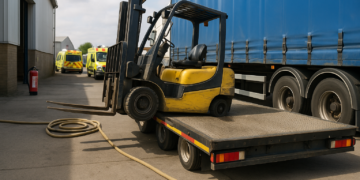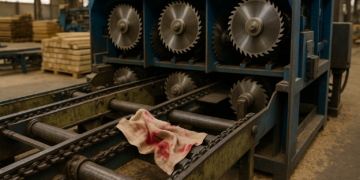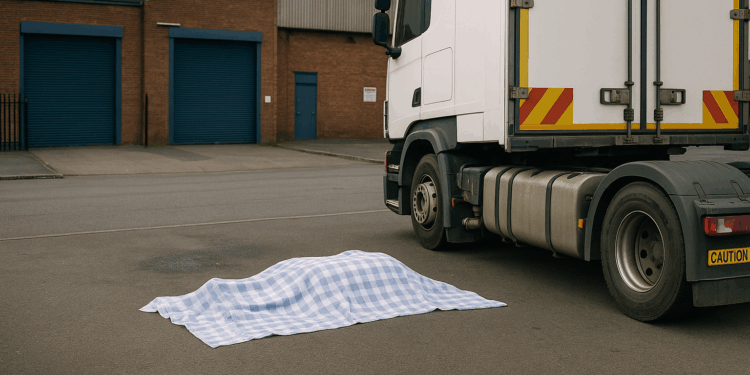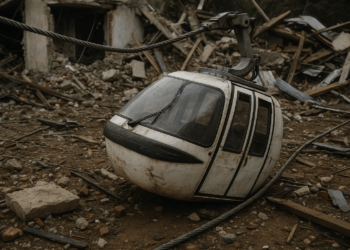Story Highlight
– Northwood Consumer Limited fined £240,000 for safety failings.
– David Saint, 61, killed by reversing HGV in Birmingham.
– Investigation revealed multiple health and safety violations.
– Saint’s family expresses deep loss and remembrance.
– HSE guidance emphasizes workplace transport safety measures.
Full Story
A manufacturing firm has been fined £240,000 following the tragic death of David Saint, a grandfather who was struck by a reversing heavy goods vehicle (HGV) at an industrial estate in Birmingham. The incident occurred on 19 October 2023 as the 61-year-old walked across a service road at the site operated by Northwood Consumer Limited, situated on Electric Avenue.
Describing her father as ‘my everything,’ Samantha Saint expressed profound grief over his loss, stating, “My life now consists of ‘what would dad do?’ I think of him and miss him every day.” Mr Saint, who was employed as an engineering manager, leaves behind his wife, Cassandra, along with his children, Samantha and Adam, his grandchildren, Jake and Ava, and his father, Terry, as well as his siblings, Paul, Kim, and Michael.
The Health and Safety Executive (HSE) conducted an investigation which revealed multiple failures by Northwood Consumer Limited regarding health and safety practices. The firm did not carry out adequate risk assessments relating to workplace transport, neglected to regulate the movement of HGVs, failed to minimize the need for reversing manoeuvres, and lacked proper signage to alert individuals to vehicle hazards.
HSE guidance recommends steps that employers should take to comply with legal obligations and enhance safety in workplace transport environments. This information is also beneficial for managers, employees, and safety representatives.
Reflecting on his father’s impact, Adam Saint shared, “I just miss my dad being there. I miss the conversations that we used to have and his guidance. I just miss everything about him.”
On 6 October 2025, Northwood Consumer Limited appeared before Birmingham Magistrates Court and pleaded guilty to breaches of the Health and Safety at Work etc Act 1974, specifically Sections 2(1) and 3(1). In addition to the fine, the court ordered the company to pay costs amounting to £6,917.
Charlie Rowe, the lead HSE inspector, characterized the incident as “tragic and shocking” and emphasized the ongoing challenges of pedestrian safety in workplace environments, noting that vehicle collisions remain a leading cause of fatalities in British workplaces. “Many of these incidents involve the reversal of vehicles with poor visibility, such as HGVs,” he stated. “The HSE will continue to take appropriate enforcement action where employers fail to implement reasonably practicable measures to keep people safe. My thoughts remain with all of David’s family and friends.”
This case illustrates the importance of stringent workplace safety protocols and the responsibility of employers to foster a secure working environment. The HSE, as the national regulator for health and safety in the workplace, is committed to ensuring compliance with safety standards to protect lives.























This is a heartbreaking and entirely preventable tragedy. As a UK health and safety professional, my immediate thoughts are with Mr Saint’s family. The HSE’s findings — inadequate risk assessments and poor signage — point to fundamental failings in basic duty-of-care measures that should be non-negotiable on any site where vehicles operate.
Practical priorities going forward:
– Conduct thorough, recorded risk assessments for vehicle/pedestrian interfaces, reviewed whenever site use changes.
– Implement physical segregation of vehicles and pedestrians where possible, with clearly marked pedestrian routes and robust barriers.
– Fit vehicles with appropriate reversing aids (cameras, sensors, audible alarms) and ensure drivers are trained and competent in system use and site-specific controls.
– Introduce traffic management plans, speed limits, and designated marshals for high-risk manoeuvres.
– Ensure effective site supervision, visible signage, and ongoing safety briefings for visitors, contractors and staff.
– Maintain clear, auditable records demonstrating compliance and continuous improvement.
Fines and investigations are essential, but prevention requires organisations to embed safety culture and proactive risk control. No one should be put at such risk simply by being on site.
This tragic incident is a stark reminder that complacency around vehicle safety on site can have devastating consequences. As a UK health and safety professional, I would highlight that businesses must: carry out thorough, dynamic risk assessments for vehicle movements; eliminate or segregate pedestrian routes from HGV paths wherever possible; implement physical controls (barriers, one-way systems, safe crossing points) and high-visibility markings; ensure adequate signage and lighting; fit vehicles with suitable reversing aids (cameras, sensors) and consider banksmen where sightlines are poor; and provide clear, role-specific training and supervision for all staff and visitors.
The £240,000 fine reflects not just punishment but the urgent need for dutyholders to proactively manage risks—regularly review procedures, learn from near-misses, and engage workers in safety planning. Above all, safety decisions must prioritise people over operational convenience; lives depend on it.
This tragedy is a stark reminder that basic safety controls must never be treated as optional. Effective risk assessments, clear signage, and safe vehicle management are fundamental and lifesaving. Employers must identify hazards, segregate vehicles and pedestrians where possible, enforce safe systems of work and ensure staff and contractors are competent. Regulators and courts will rightly hold organisations to account when those duties are ignored. Families should not have to pay the price for preventable failures.
This tragic incident underlines how preventable so many workplace deaths are when basic controls are not in place. Employers must carry out thorough risk assessments, segregate pedestrians from vehicles, use clear signage and safe systems of work, and ensure staff and drivers are trained and supervised. Regulators and companies need to treat vehicle movement on site with the same seriousness as any other major hazard to avoid more families suffering the same loss.